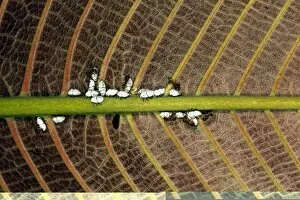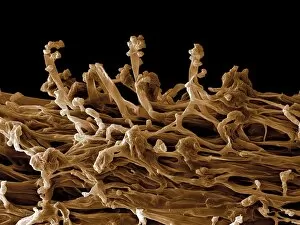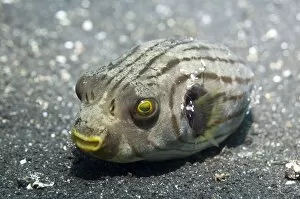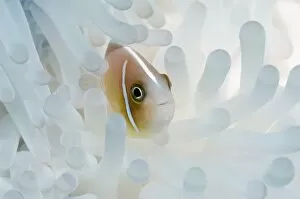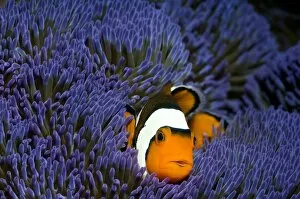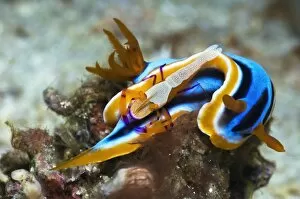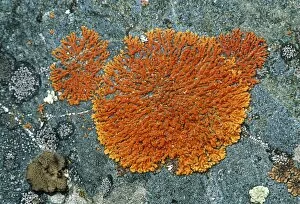Symbionts Collection
Symbionts: Nature's Perfect Partnerships In the vast ocean, a False clown anemonefish finds solace in the protective embrace of its host anemone
For sale as Licensed Images
Choose your image, Select your licence and Download the media
Symbionts: Nature's Perfect Partnerships In the vast ocean, a False clown anemonefish finds solace in the protective embrace of its host anemone. This remarkable relationship showcases symbiosis at its finest - where both parties benefit from their close association. On land, ants diligently tend to aphids on a plant stem, forming another intriguing example of mutualism. The ants provide protection and food for the aphids while benefiting from their sweet honeydew secretions. Moving to microscopic wonders, lichen reveals itself under the scanning electron microscope. A mesmerizing fusion of fungi and algae, this composite organism thrives by sharing resources and providing shelter for each other. Venturing back into aquatic realms, coral shrimp seek refuge amidst vibrant coral reefs. These tiny crustaceans clean parasites off corals while gaining safe harbor among their intricate structures. Urchin crab scuttles along with spiky companionship as it clings onto sea urchins for camouflage and protection against predators. Their unique bond exemplifies how different species can rely on each other for survival. The Harlequin sweetlips gracefully glides through tropical waters alongside Manila pufferfish - two distinct fish species united by a common purpose: finding safety in numbers against lurking dangers beneath the waves. Twoband anemonefish dances playfully around its host anemone's tentacles. In return for shelter and protection, these colorful fish defend their home from intruders - showcasing yet another fascinating example of mutualistic symbiosis in action. Anthias fish elegantly swim alongside cleaner shrimp within bustling coral communities. As they feed on parasites found on larger marine creatures' bodies, these diligent cleaners receive nourishment while ensuring optimal health for their clients. Clown anemonefish captivates our attention with its vibrant colors as it navigates through its beloved sea anemones' tendrils.


